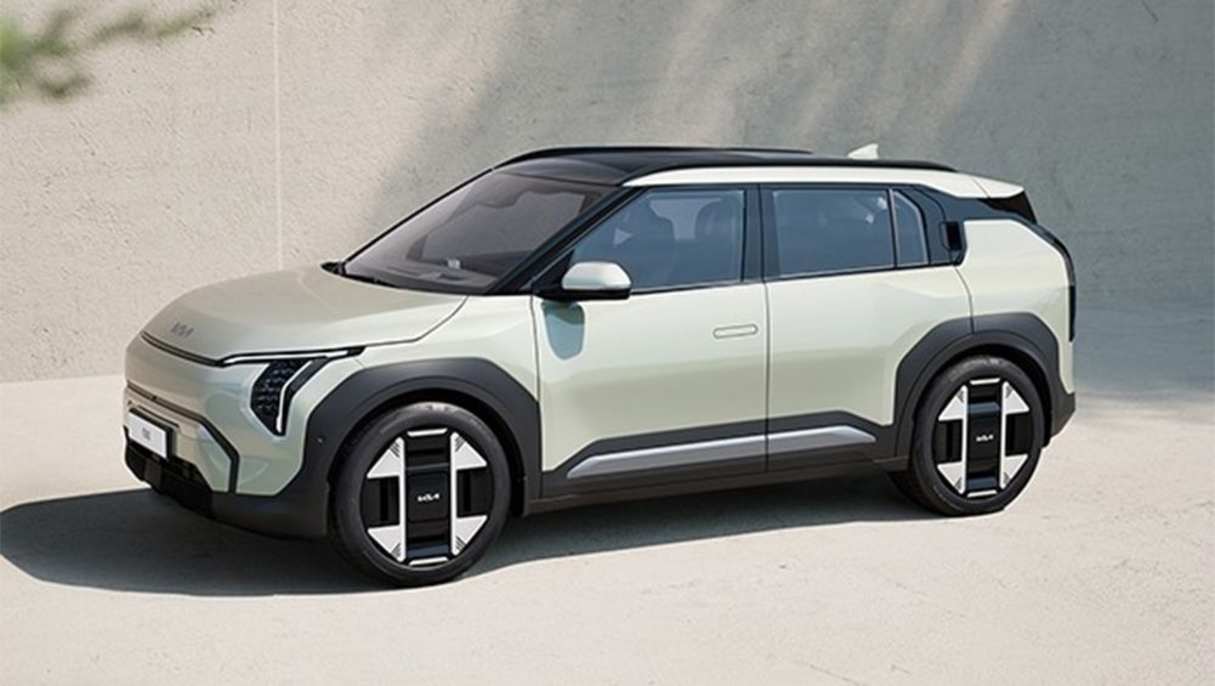Hyundai’s cute little Inster EV will lead the charge of affordable electric cars aimed at everyday drivers.
Car makers from Europe, Korea and the US are starting to follow the lead of the Chinese car makers and produce lower cost, volume selling electric cars rather than the high priced models initially offered.
The Inster will be in Aussie showrooms early next year, and Hyundai Australia has confirmed it will take both standard and long range variants.
The cheapest versions will be priced below $40,000, which isn’t the most affordable electric car on sale, but it places it right at the pointy end.
A driving range of 305km for the standard range and 355km for the long range are perfectly acceptable for someone who spends the majority of their time in town.
Sitting in the car at the recent Busan motor show, where the Inster made its debut, the vehicle’s quality compared to cut-price alternatives from emerging Chinese brands was stark.
Fit and finish of the cabin was excellent, it has just the right amount of high-tech features and is remarkably practical inside despite its little footprint.
The car’s exterior style stands out, too. Hyundai designer Simon Loasby told CarsGuide the car is fun, full of character and it just makes you smile when you look at it.

If you’re a city dweller looking for a relatively affordable small electric car, it’ll be hard to drive past the Inster.
Hyundai isn’t the only major carmaker to come to the realisation that they need smaller, cheaper EVs.
Ford boss Jim Farley recently told CNBC the Blue Oval was going to introduce a US$30,000 ($45,000) electric car as it needs to make smaller EVs.
“We have to start to get back in love with smaller vehicles. It’s super important for our society and for EV adoption,” said Farley.
Earlier this year Ford announced its EV division had lost about US$1.3b ($2b) in three months as sales of its cars slowed and the cost of developing them jumped.

Farley said that developing smaller EVs was the best way to make them profitable sooner.
“You have to make a radical change as an [automaker] to get to a profitable EV. The first thing we have to do is really put all of our capital toward smaller, more affordable EVs,” he said.
“These big, huge, enormous EVs, they’re never going to make money. The battery is $50,000. The batteries will never be affordable.”
Ford has been forced to slash the price of the Mustang Mach-E electric SUV in Australia by up to $15,000 since December, 2023 in the face of slow sales.
Kia is getting in on the small EV act, too.
It recently revealed the EV3, which will be a circa-$50,000 electric SUV. A smaller and more affordable EV2 is also likely.

Volkswagen has confirmed the ID.1 hatchback, which is the electric spiritual successor to the Up pint-sized city car.
VW predicts the ID.1 will cost about $30,000, which puts it in the same ballpark as a entry-level Mazda3 or a fully-loaded Mazda2.
Volkswagen’s global boss Thomas Schafer said the brand’s promise is “electromobility for all”, according to UK publication Autocar.
“The future is electric. In order for electromobility to become widespread, attractive vehicles are needed, especially in the entry-level segment,” said Schafer.
The ID.1 isn’t expected until 2027 in Europe with a likely Aussie arrival date further down the line.















.jpg)




.jpg)




